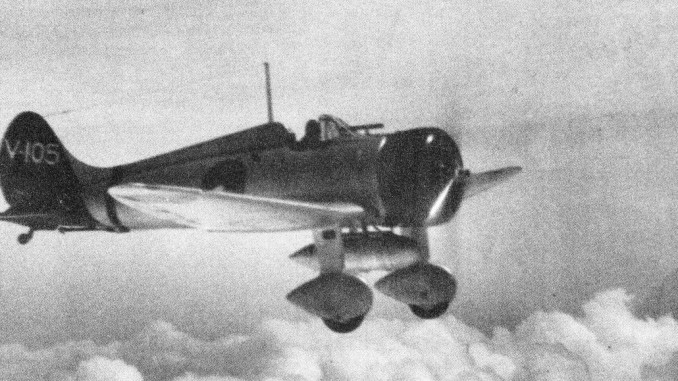
One of the difficulties in writing about Japanese aircraft of the World War 2 era is how you refer to the planes themselves. The Japanese had confusing naming schemes that they used in contemporary documents, which have largely been ignored by modern writers in favour of manufacturer codes. The Allies sidestepped the confusion by introducing their own codename scheme for Japanese aircraft, but this can sometimes muddy the waters still further!
The IJAAF and IJNAF used similar systems for naming newly ordered aircraft. In the IJNAF every new design was given a short code which included information about the role of the aircraft and manufacturer as well as specifying the ‘version’ of the aircraft. So for example the famous ‘Zero’ actually started life as the A6M1 Model 11: A for ‘carrier fighter’, 6 because it was the 6th such design, M for the manufacturer, Mitsubishi, and 1 for the ‘version’. The “Model 11” specified that the airframe (1st digit) and engine (2nd digit) were both the initial design versions. Later, the A6M2, A6M3 and so on followed in this manner.
The IJAAF used a similar but thankfully much simpler system. Every design was given a kitai number, starting with the Mitsubishi Ki-1, Ki-2 and so on. Some designs which never got past the drawing board stage were given kitai numbers nevertheless. Subsequent versions were given a Roman numeral suffix, so for example the Ki-43 fighter had an initial Ki-43-I version, followed by the Ki-43-II and so on. Smaller design changes resulted in a lower case letter being appended, such as the Ki-43-Ia and Ki-43-Ib.
Both systems, although not without complications, are fairly easy to follow given enough study. Unfortunately both the Army and Navy chose to dispense with the manufacturer designations in favour of ‘Type numbers’ which were based on the year the designs entered service with the armed forces, followed by a role description. In the early 30s, the year was actually based on the current year of the Emperor’s reign, so the E1Y was called the ‘Type 14 reconnaissance seaplane’ because it entered service in the 14th year of the reign of Taisho. Later, the year system was changed to one based on the calendar year, starting in 1929 (Japanese year 2589) with such aircraft as the B2M Type 89 carrier attack bomber. Confusion was caused because there could be multiple designs with the same type number, such as in 1940 (2600) when the A6M was designated the ‘Type 0 carrier fighter’, and the E13A was given the ‘Type 0 reconnaissance seaplane’ moniker.
The Allies, having quite poor knowledge of common Japanese aircraft, often had to guess from official Japanese documentation as well as intercepted communications as to the naming of the planes they encountered. Eventually a Reporting Name system was introduced, where known or suspected types were given simple names – boy’s names for fighters (e.g. ‘Zeke’ for the A6M), girl’s names for bombers (e.g. ‘Nell’ for the G3M), girl’s names beginning with T for transports (e.g. ‘Topsy’ for the Ki-57), and trees for training types (e.g. ‘Willow’ for the K5Y). These names have, in the West at least, become almost as popular as the official Japanese designations.
Throughout this blog I intend to use the ‘short code’ system for IJNAF aircraft, and the kitai numbers for IJAAF aircraft, with the Allied reporting name added when appropriate. It’s simply easier to follow this way!

Leave a Reply